

Urban Heat Sensor Assessment and Evaluation July – August 2022
Compiled by:
Rose Jones, Ph.D.
Research & Strategy in Urban Green Health
Texas Trees Foundation
August 16, 2022
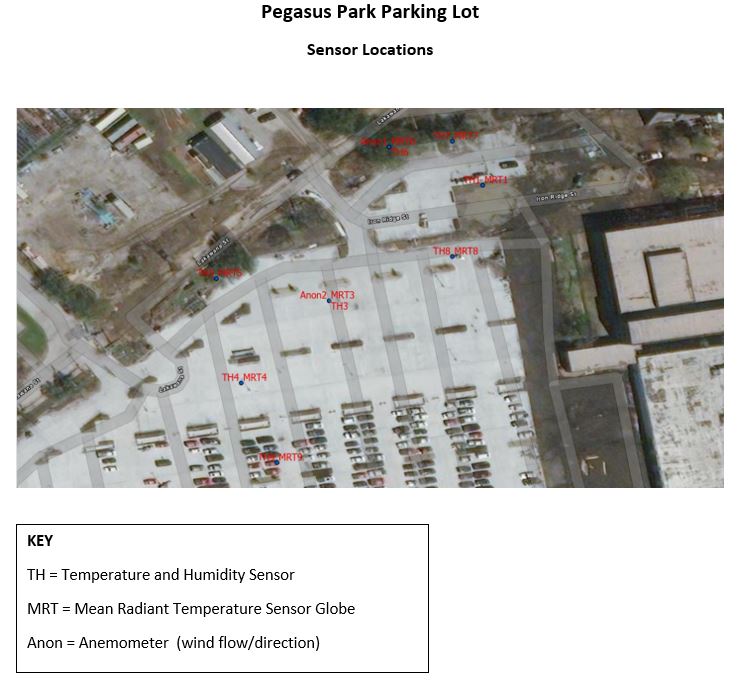
“We must listen to science – and act.” ~ Presidential Executive Order1
Overview
On Thursday, July 21, Texas Trees Foundation (TTF) placed 8 mean radiant temperature (MRT) sensors, nine temperature and humidity (TH) sensors, and two anemometers (ANON) in the Pegasus Park parking lot. Subsequently, two light sensors were added (see photos). These sensors and meteorological monitors were placed in the parking lot as part of a pilot study for the Southwestern Medical District (SWMD) project, a transformative streetscape and park project that TTF is spearheading along the Harry Hines corridor.
The sensors were strategically placed throughout the parking lot to capture data in diverse heat locations; some were placed in large trees in shaded areas, others on light poles in full sun, and a few in sunny areas with low tree canopy (see sensor location map). The sensors were deployed to capture a range of meteorologic data in real time, including temperature, humidity, wind direction, wind flow, and light (see sensor data snapshots). The sensors are programed to send data to a hub located near a window in TTF ‘s office every twenty minutes (see photo).
The pilot study allowed the TTF research team to test and calibrate the meteorological instruments that will eventually be deployed in the SWMD research site. The pilot study also served to establish standard operating procedures for sensor installation and data retrieval, write the statistical codes to analyze sensor data, and create algorithms to validate sensor positioning and proximity in the research site.
In addition to providing critical insight and logistics for deploying the sensors in the SWMD research site, the pilot study unexpectantly served to capture what is likely to be historically significant urban heat data.2 The pilot was initiated at the precise time and location that unprecedented record- breaking heat waves were sweeping through the nation this summer. Notably, the corridor along I-35 is recognized to have some of the hottest temperatures in Texas.3
TTF is currently in the process of finalizing logistics for installing the sensors in the SWMD. The sensors will then be removed from the Pegasus Park parking lot and relocated to the SWMD research site. It is anticipated that this transition will take place by the end of August. A de-installation update will be shared with the Pegasus Park management team.
References
1. Executive Order on Tackling the Climate Crisis at Home and Abroad, January 27, 2021.
2. John Muyskens et al. More dangerous heat waves are on the way: see the impact by zip code. The Washington Post, August 15, 2022.
3. Jason Samenow. Unforgiving heat wave in Texas and southern plains to worsen next week. The Washington Post, July 14, 2022.
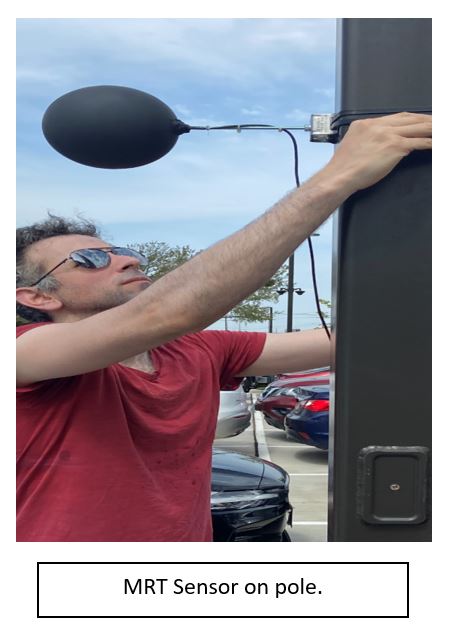
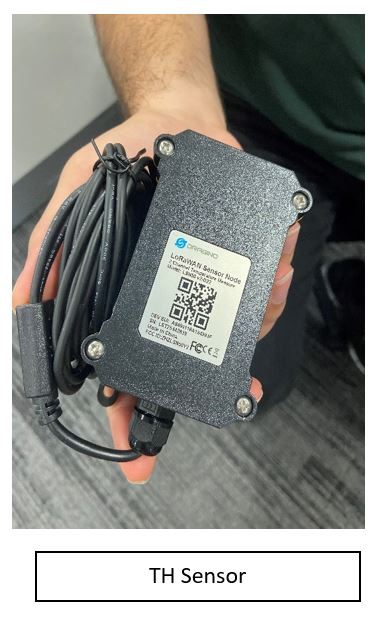
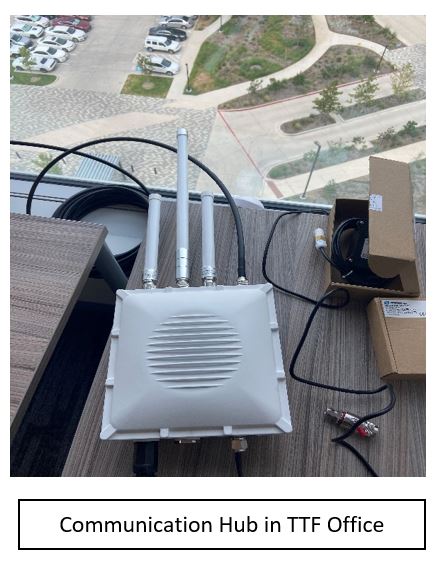
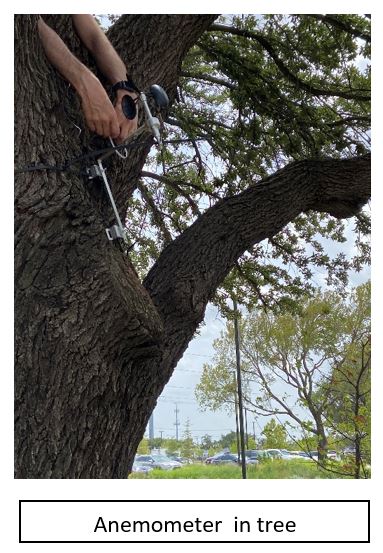
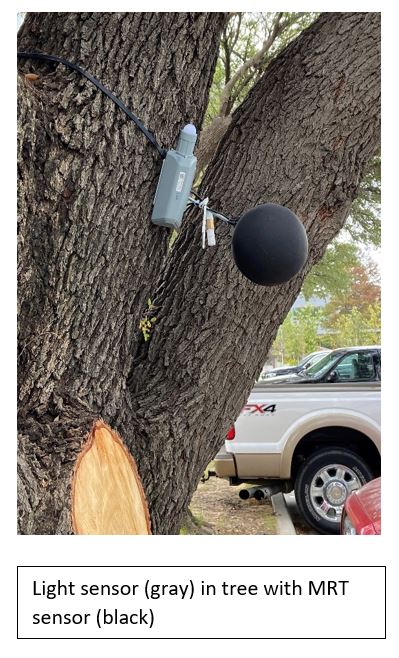
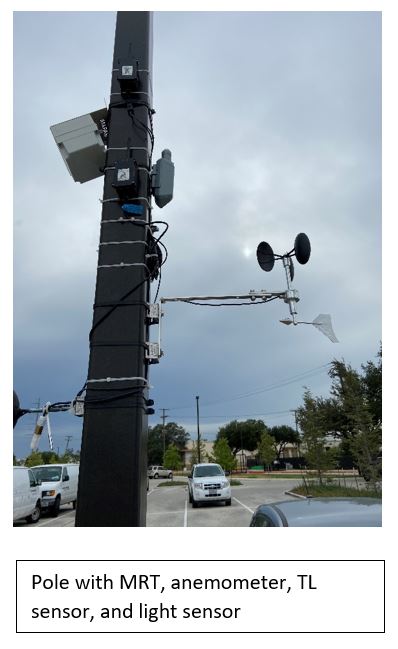
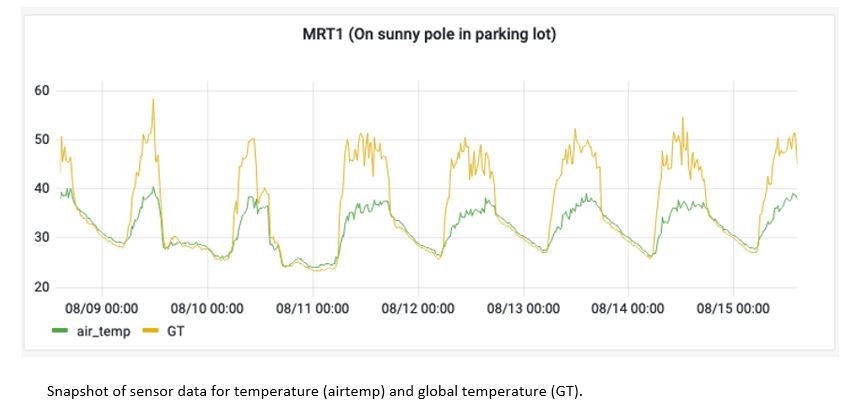
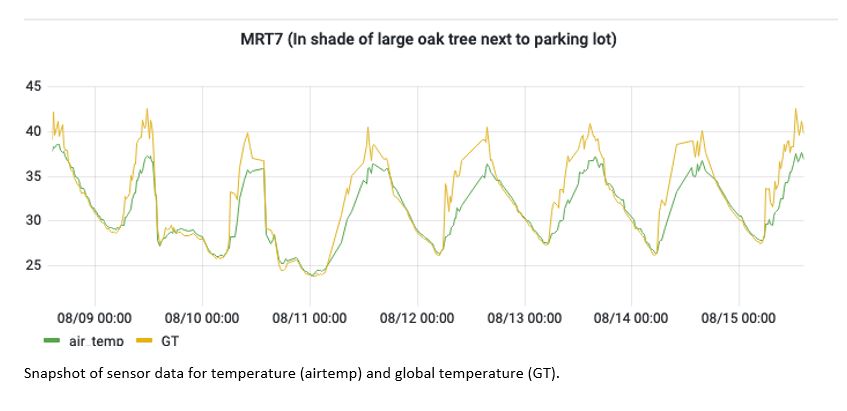
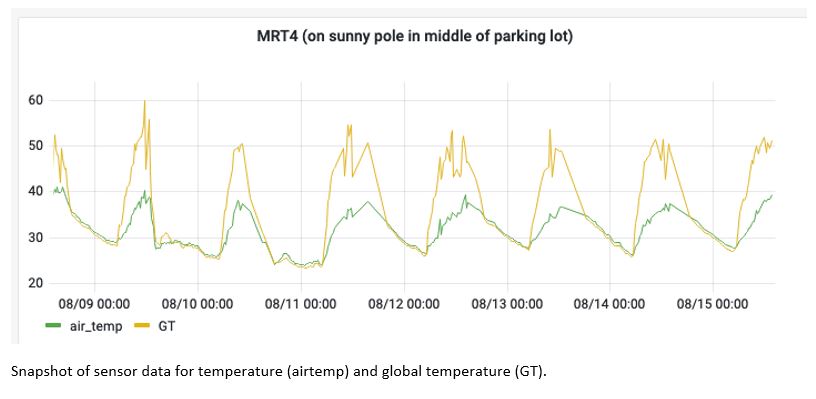
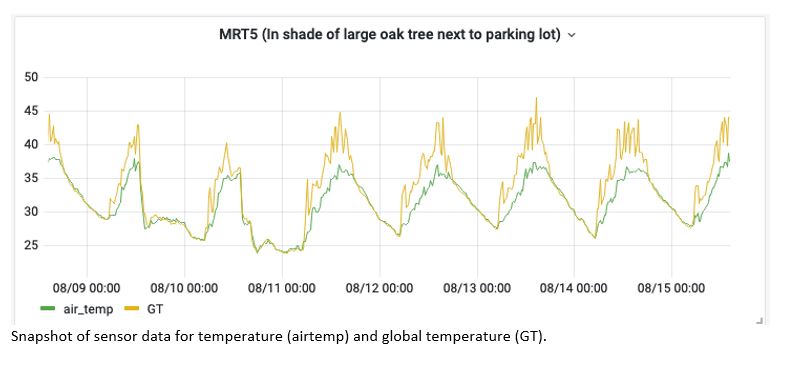
Acknowledgements
Daniel “Fletch” Fleischer, Chief Science Officer, at Hyphae Design Labs, for sensor fabrication, installation, and data analysis.
Farbod Tavakkoli Khomeini, intern at TTF and doctoral candidate in applied science at SMU for supporting sensor fabrication, installation, and data analysis.
Linda Sterma, Senior Property Manager at Pegasus Park, for approving and supporting the parking lot pilot study.
Leighton Watts, Director Water Cooler at Pegasus Park, for logistical support and connections for initiating the pilot study.
Texas Trees Foundation Contact
Rose Jones, Ph.D.
Research & Strategy in Urban Green Space
Email: rose@texastrees.org
Tel: 214.725.8151
